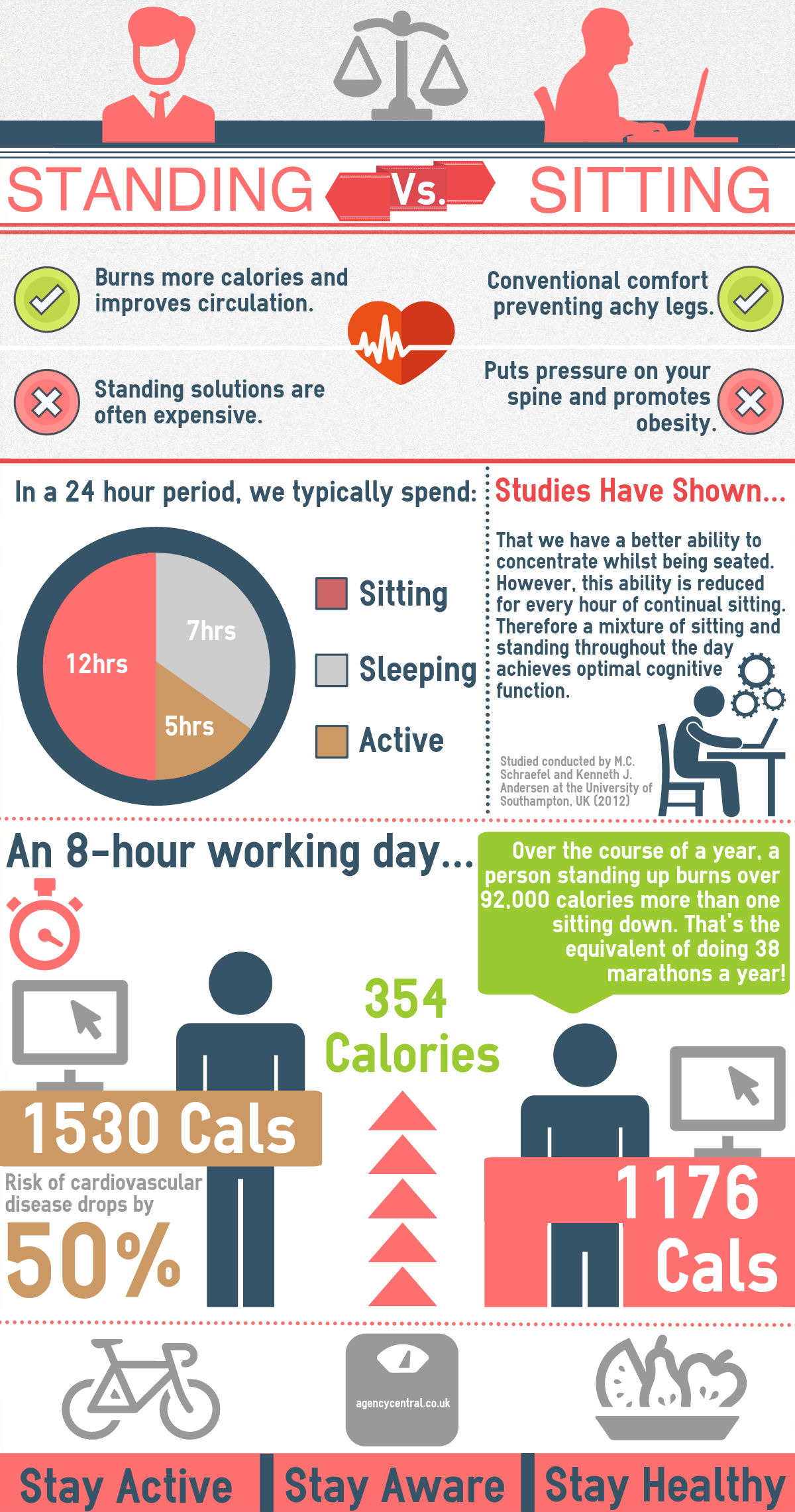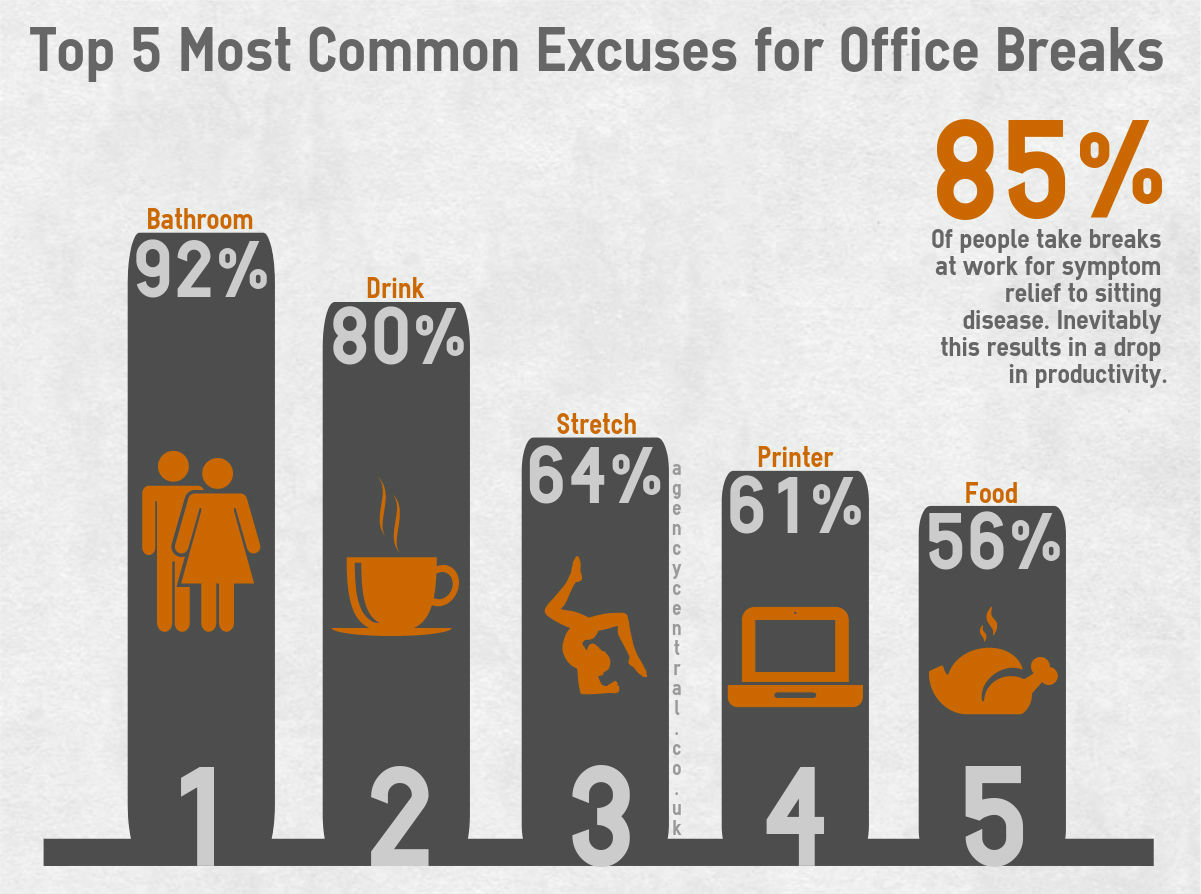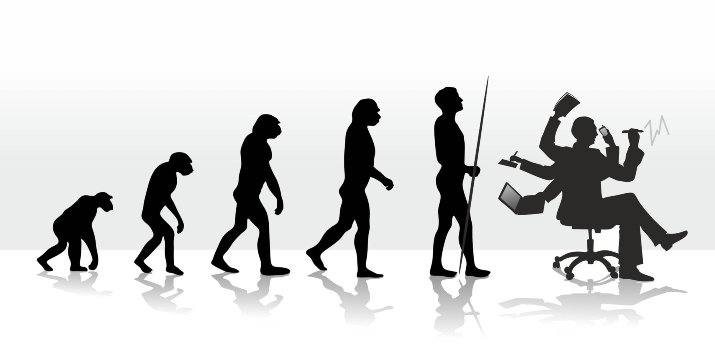There are now countless studies on how sitting for such long periods is slowly ‘killing you’ and how we should all treat it as a serious health threat. Yet people who are standing up everyday are left with aches in their muscles, pains in their joints and spinal problems.
So either sitting OR standing for long periods is not ideal, but with few careers offering anything other than an extremity, which is better for your health?
I used to work at Subway during my time at University. I was a skilled Sandwich Artist who could build you a BMT faster than you could say extra cheese. I worked long weekend shifts, often 10 hours as a minimum. During that time I would sit down for half an hour at lunch. I ached a lot – my feet, my back, everything. Nothing could console me. Not even the glorious cookies.
Diet, tactical breaks, proper equipment and correct posture are just a few measures you can take to alleviate health problems.
I now work at a desk. Besides the occasional water refill or toilet break, I probably won’t move much from my chair throughout the day. Then I will be driving home for around 40 minutes, sitting in my car. Later, after I’ve been to the gym, I will probably watch a film – sitting on my sofa. It’s easy to ignore but, for most of us, we are sitting down far more than we should.
I can write with experience that either standing or sitting for long periods aren’t great for you. But what other choices do we have? It would seem very little…
There are, however, conscious lifestyle decisions we can make in order to ensure we minimise health risks. Diet, tactical breaks, proper equipment and correct posture are just a few measures you can take to alleviate health problems.
Anthropometrics (Anthro What?!)
The computer generation is ever-growing, with people chained to their desks for upwards of 8 hours per day – slaves to the corporate machine of type, space, send. Type, space, send. If you are one of the fortunate few (like myself) who have a strong passion for what they do, it can be easy to lose yourself for hours with little movement from your chair.
I’m sure every office worker out there is aware of the glorious benefits of anthropometrics. How far away your computer screen is, keyboard height, straight back, spacial awareness of desk items, glasses prescription…the list is endless. It might all seem like finicky stuff that’s relatively insignificant, but all of these little things add up to yield long-term, big results.
We assume that sitting is an act that requires no thought or consideration – so it goes without question that most of us have been doing it wrong.
Most large furniture companies build their chairs and desks based around anthropometry. This basically means that they take into account the ‘optimum position the human body should take when at rest for long periods.’
This all sounds like a lot of work and over-consideration right? Well, if you think about the huge flux in heights, widths, arm-lengths, leg-lengths etc. in humans, to build a desk/chair that is suitable for 90% of them is quite a challenge.
So for companies to invest thousands into the correct design and fit, only for you to slump and hunch over your keyboard, is pointless. That’s why we should all take time to learn how to sit.
Learning How to Sit
When you’re learning how to walk, your steps are considered cute and often filmed for posterity, as you gain the right of passage into a world of mischief and 24/7 monitoring.
Apart from the occasional ‘sit up straight!’ from your mum, none of us were really taught how to sit. We assume that sitting is an act that requires no thought or consideration – so it goes without question that most of us have been doing it wrong.
Then, the bigger problem we face is sheer routine. As creatures of habit, our adopted postures at a desk can be very hard to shake off. Re-learning anything is hard enough – but re-learning something you’ve been doing since you wore nappies can prove almost impossible.
Calculate your daily sitting time and the effects here.
The first thing to consider is how much pressure you are loading onto your neck and back. By hunching over your keyboard, guarding it closely like your last bowl of coco pops, you’re actually putting unnecessary pressure on your neck and shoulders. For the long term, this is never going to be good practice.
Instead, Your back should remain as straight as possible, with your elbows at a 90 degree angle on the desk and your feet comfortably on the floor. The height of your computer monitor should see your eyes at approximately one third of the way down the screen – this helps to ease any neck strain.
Sitting with one leg folded under the other, or on a slight angle to the desk, will provide temporary relief. However, the peril of ‘pins and needles’ will soon take hold and you will be back to basics again.
By sitting correctly in the first place, it will hopefully alleviate these pressures and mean that you can remain comfortable for longer.
A different angle
There have been a number of studies into exactly how we should be sat. With the posture police always telling us to keep a straight, 90-degree angled back, research has found that 135 degrees could actually be better for us.
At 135 degrees, your lower back is not loaded with as much pressure, shoulder blades are less tense and, with a lumbar supported chair, it follows the natural ‘S’ curve of our spine.
Although this isn’t a total solution to the issues of sitting down all day, it does help to ease back pains. Take a look at the infographic below to understand the effects sitting has over the course of a day when compared to standing up.

Helpful Accessories
Acknowledging the risks and dangers of extensive sitting, many companies are inventing/re-inventing all kinds of new office accessories to alleviate the problems a little. Below are three of the most popular additions to modern-day offices:
Footrests
The position of your feet whilst being seated for long periods has a significant impact on your overall posture. If there is pressure on the back of your legs, or your feet aren’t resting on the floor, a footrest could be a useful office accessory.
We all know that movement improves blood circulation – so sitting down of course has negative impacts on this too. With an ergonomic footrest you can greatly reduce your chances of developing any circulatory conditions, promoting blood to flow as freely as the Amur River.
Poorly positioned feet can also result in back problems – as when sitting for longer periods, your feet tend to be elevated from the ground, putting more strain on your lower spine. Using a footrest can help to maintain proper ergonomic angles and relieve the pressure felt on your back in the process.
Changing your position often and adjusting your posture slightly throughout the day is always beneficial – such as lifting your arms, moving your feet and taking frequent breaks.
Ergonomic Chairs
Having recently purchased myself the Rolls Royce of office chairs, I now appreciate what a significant impact a good chair has on your working day. Comfort increases tenfold, resulting in higher productivity and a generally higher morale. Picking an office chair can be a minefield though, with thousands of variations flooding the market. Leather or cloth? Headrest or not? Armrests or no armrests? The combinations are endless.
Perhaps the most common mistake people tend to make when buying an office chair is basing their purchase on the way it looks. An all-leather chair, although looking plush and ‘executivey’, will make you sweat more and be very seasonal (ie. cold in the winter and hot in the summer).
Instead, mesh-back chairs provide you with a flexible support and breathability that is much more comfortable. Adjustability is always useful too (height, lumbar, headrest etc.) – as this will provide you with enough customisation to cater for your individual needs.
As with most things in life, you get what you pay for when buying an office chair, so don’t go too cheap. Price ranges from £70 – £150 are reasonably sensible and you can expect a decent chair for that. If you want to spend your days like I spend mine, opt for this beauty.
Standing Desks
The standing desk market has boomed over recent years, probably as a direct result of the harrowing infographics like the one above. But in a society where office jobs are always on the rise and we become slaves to the computer screen, we’ve been forced to find a solution.
A standing desk is adjustable by electric motors that can rise or lower the working platform to suit the occupant’s needs. This gives people the flexibility to stand up for an hour, then sit down for an hour. They come in a range of sizes, colours and combinations to suit any office.
Apart from providing a functional solution to sitting all day, the standing desk looks kind of cool too, changing the dynamic of the office to a ‘whack-a-mole‘ kind of arena.
Interview
To understand how the popularity of the standing desk has increased, and what health benefits they deliver, we got in touch with Nick White from iwantastandingdesk.com:
How much has the interest in standing desks increased over recent months/years?
Interest is ever on the increase (last month was one of our best on record). It’s very much influenced by media attention – when a piece comes on TV website visits and purchases increase dramatically.
Inactivity is starting to be understood by the general public and its implications. People are starting to understand that the right amounts of normal, everyday activity over a period of time has significant health benefits.
One of those activities is standing more, or put another way, sitting less.
For example standing just 3 hours a day, 5 days a week over a year will burn about 30,000 extra calories in activity levels that’s the same as running about 10 marathons a year.
Do you find your biggest customers are private individuals or companies?
We are set up to be able to do business with SME’s and individuals so that’s where most of our business comes from. Large companies are aware of the benefits of sitting less and becoming more active but it takes much longer to introduce it into their culture.
What is your best-selling model?
Our best selling model is split evenly between the manual BigJack and the electric BigJack.
How do you recommend incorporating a standing desk into a working day?
We would recommend that people start with a standing desk at a gentle pace until they know how their bodies react. Someone who is active outside of the office is going to find the transition much easier.
But it’s not hard. Humans are designed to be active. Sitting is meant to be a rest activity, not a full time one.
The more you stand the more your body develops the muscles that allow you to do it.
We work with a high position Rest Stool as on our website. When we take a break we use it as a perch, not a chair and take the weight of our legs. As a rule 10 minutes of this and you’re ready to go again. This also has the advantage of not needing to fully lower/higher the desk.
Everything Nick has said in the interview is quantified and supported by various reputable athletes and personal trainers too. Alderbank Physiotherapist, Lee Barker, states that:
“the regular transference of weight from one foot to the next in a weight bearing/standing position is ideal. Sitting, especially for long periods, places the spine in a flexed posture and can strain and weaken the ligaments which are the scaffold of the spine. Standing allows us to utilize the flexible shock absorbing capabilities of our feet and knees and help divert some of the load and strain from our spinal joints and muscles.”

Sit Down Exercise Class
Sitting down doesn’t mean you can’t exercise and perform prehabilitation stretches. Below is a comprehensive, head-to-toe breakdown of some steps you can take in order to maintain a healthier lifestyle in the office:
Neck: Avoid rolling your neck as this can cause joint damage. Instead, moving your head back and forth then side to side slowly can help reduce muscle tension.
Shoulders: Rolling your shoulders a few times every hour can help to relieve aches and pains, whilst promoting circulation and prevent stiffness in the joints.
Chest: If you tend to hunch over your keyboard, you probably notice a tightness and ache in your chest. Counteract this by performing the good old ‘morning‘ stretch – arms out and shoulder blades squeezed.
Top Tip: set a silent reminder on your phone or computer every 45 minutes to 1 hour, keeping you conscious about moving around and stretching often.
Abdomen: Strengthening your stomach doesn’t always require medicine balls and sit ups. Tensing your abdominals for a few minutes every hour keeps them strong and healthy.
Wrists: If you tend to spend a lot of time typing, rolling your wrists often can help reduce the risk of developing Carpal Tunnel Syndrome.
Ankles: Being the same joint as your wrists, rolling your ankles often has the same benefits. However, blood circulation in your legs whilst sitting is exceptionally low, so rolling your ankles will also prevent numbness (pins and needles as we all know it).
Get Up, Stand Up
So it would seem that sitting is slowly killing us all. But if we took every ounce of scientific data about these things too seriously, we would forever be rolling around in balls of bubble wrap. Of course sitting down for long periods is harmful, but so is too much of anything. The key is how we manage it and stay conscious of the effects every day.
It’s by no coincidence that as the computer generation soared, so did sitting down and so did obesity. With the increased waistline of the nation, came an increase in diabetes – over 60% in the past decade – something which has scattered the news channels recently.
It is far too easy to forget about the long-term effects sitting can have on our body, but by keeping tabs on a healthy diet and routine exercise, we can all combat sitting disease.
Hopefully you’ve found this article insightful and motivating to move more. Awareness is the first step to prevention and, as we all know, prevention is better than cure. Just remember, it’s never too late to change a habit!
Written by Jon Clarke



